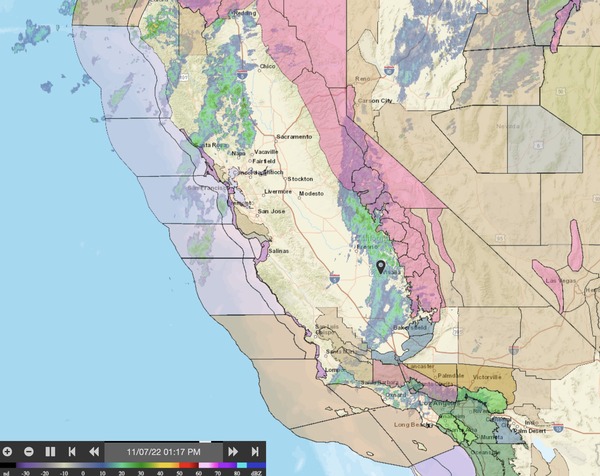The wet season has arrived on the West Coast, as precipitation rates are likely to rise over the next 10 days or so. Water and moisture intrusion is a serious concern. It can result in significant physical damage to buildings which requires expensive repair and remediation efforts.

According to a report by Zurich American Insurance Company, “water intrusion is one of the leading property damage risks associated with new construction and renovation projects.” By researching their claims experience from 2007 through 2016, Zurich found “nearly 50% of all Builders Risk claims resulted from some form of weather or escape-of-water event”. “A water damage event can range from rainstorms and snow-melt, to flooding and hurricanes, as well as damage from internal water-carrying systems, such as plumbing and sprinkler systems.” White Cap Resource Center: Water Intrusion: The Contractor’s Most Expensive Enemy, Rick Yelton,
Water intrusion can cause costly damage in many ways. For example, in October 2021, during the atmospheric river event, a large modular construction housing project flooded and caused major damage for one of ACC’s client. At that time, ACC was able to assist with the restoration of this project, which took over seven months and a staggering cost of multi-million dollars.
By taking preventive steps and developing a plan for responding to moisture intrusions you can mitigate or even prevent a significant impact to operations.
Contact Us to discuss water intrusion concerns
Even in the absence of an intrusion event, it can still be extremely valuable to measure baseline conditions to establish parameters for a clean building. These values can be used as cleaning goals in the future in the event water intrusion does occur.
Prevention and Planning
Quick steps that can be taken to help minimize the chances of water intrusions include:
- Always be aware of weather conditions anticipated for the worksite location and time of year.
- For new construction ensure temporary protective measures are adequate to withstand severe weather events.
- Inspect and clean-out roof drains and gutters to insure they are working properly.
Read the full list of steps on ACC’s Blog
Have a plan to respond to water intrusions that is scalable. Large and complicated water intrusions are best left to professionals. Smaller intrusions may be handled in-house with properly trained personnel and the appropriate equipment. Here are some important considerations:
- Develop a written response plan, train key personnel and review regularly. If an in-house response team is established, it is important to understand its limitations and establish strict criteria for calling in professional support.
Read the full list of considerations on ACC’s Blog
Large Scale Water Intrusion
In the event that water Intrusion occurs, the number one priority is to find out
where the water is coming from and stop the leak or leaks. If you have a flood try to extract the water out as soon as possible and depending on the size call a remediation contractor to help with the drying process. Alert your insurance carrier immediately, so they can send over an agent as soon as possible. Take as many pictures as you can to verify to water intrusion issues.
Wet drywall is the number one cause of mold in a new building. In most cases its prudent to contact an environmental consultant to help with documenting and determining the extent of water damage. A trained inspector using an infrared camera and moisture meter can determine what wallboard should be removed and what can be saved. Mold can start grow in as little as 24-hours, so starting the dry down process immediately along with the removal of wet building material is critical. Once mold starts growing you will need to contain these areas similar to asbestos abatement projects, which could double or triple cleanup costs.
Some tips for drying out large areas…Read the full article and tips on ACC’s Blog.
Contact Us to learn more on how ACC can meet your environmental needs.

